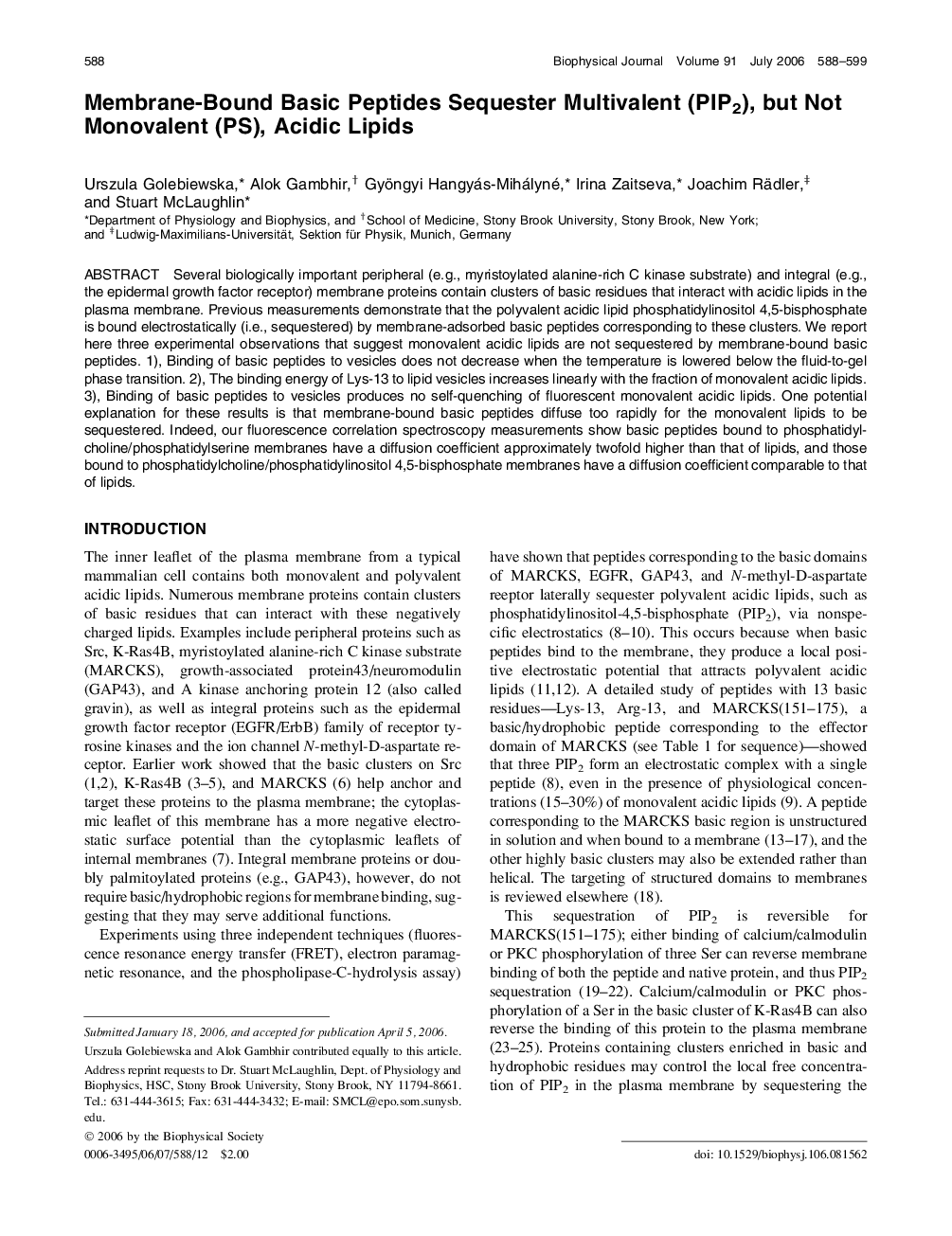| کد مقاله | کد نشریه | سال انتشار | مقاله انگلیسی | نسخه تمام متن |
|---|---|---|---|---|
| 1960458 | 1057962 | 2006 | 12 صفحه PDF | دانلود رایگان |

Several biologically important peripheral (e.g., myristoylated alanine-rich C kinase substrate) and integral (e.g., the epidermal growth factor receptor) membrane proteins contain clusters of basic residues that interact with acidic lipids in the plasma membrane. Previous measurements demonstrate that the polyvalent acidic lipid phosphatidylinositol 4,5-bisphosphate is bound electrostatically (i.e., sequestered) by membrane-adsorbed basic peptides corresponding to these clusters. We report here three experimental observations that suggest monovalent acidic lipids are not sequestered by membrane-bound basic peptides. 1), Binding of basic peptides to vesicles does not decrease when the temperature is lowered below the fluid-to-gel phase transition. 2), The binding energy of Lys-13 to lipid vesicles increases linearly with the fraction of monovalent acidic lipids. 3), Binding of basic peptides to vesicles produces no self-quenching of fluorescent monovalent acidic lipids. One potential explanation for these results is that membrane-bound basic peptides diffuse too rapidly for the monovalent lipids to be sequestered. Indeed, our fluorescence correlation spectroscopy measurements show basic peptides bound to phosphatidylcholine/phosphatidylserine membranes have a diffusion coefficient approximately twofold higher than that of lipids, and those bound to phosphatidylcholine/phosphatidylinositol 4,5-bisphosphate membranes have a diffusion coefficient comparable to that of lipids.
Journal: - Volume 91, Issue 2, 15 July 2006, Pages 588–599